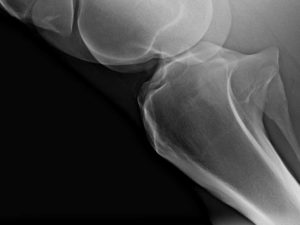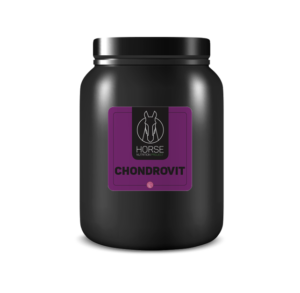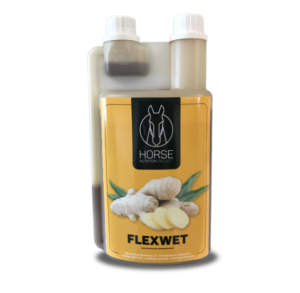The chondroprotective agents in horses
Joint, tendon and ligament structures are complex structures that include several types of tissue and are subject to specific mechanisms of homeostasis. At the articular level, cartilage is made up of chondrocytes (producer cells), collagen and proteoglycans. Tendons and ligaments are made up almost exclusively of collagen fibers arranged in a bundle.
The studies currently available on the subject of the chondroprotectective agents in equine medicine are few in number and struggle to have enough subjects to be significant. However, some positive trends have been identified, in particular through the use of in vitro models and extrapolation from human medicine. Hopefully the future will allow the development of in vivo studies in the equine species.

The glycosaminoglycans
From a glucose molecule, the body synthesizes glucosamine phosphate which will be transformed into N-acetylglucosamine which, in turn, will be transformed after several steps into chondroitin sulfate. This is the route of glycosaminoglycans or hexosamines. The chondroitin sulfate will then attach to a frame of hyaluronic acid and protein chains to form proteoglycans. The role of proteoglycans in synovial fluid is to provide lubrication to the joints and in the cartilage to keep it elastic.
The glucosamine
Glucosamine is therefore an amino monosaccharide. Researchers tested 3 marketed forms of glucosamine: glucosamine sulfate, glucosamine HCL and N-acetylglucosamine in an in vitro equine model of cartilage degradation. Only glucosamine sulfate and glucosamine HCL similarly effectively inhibit the degradation of articular cartilage. In induced joint inflammation in young horses, preventive oral administration of glucosamine has reduced this inflammation. Its major advantage is its ability to be transformed into chondroitin via hexosamines route.
The chondroitin
Chondroitin fights against the degradation of cartilage by promoting its repair, particularly in articular osteochondrosis syndrome and osteoarthritis phenomena. It also partially inhibits the production of pro-inflammatory cytokines. Several studies associate a decrease in joint pain and better mobility in human and equine medicine (these studies used a combination of glucosamine and chondroitin).
The hyaluronic acid
Its main role is to provide lubrication to the joints. Its main route of use is intra-articular injection with good results. Oral, studies disagree on its effectiveness and its bioavailability is questionable.

CHONDROVIT
Chondrovit is an ally of choice in all cases of locomotor disorders in the horse.
The pain-relieving and anti-inflammatory properties of harpagophytum improve the comfort of an injured horse or a horse with osteoarthritis.
Harpagophytum is combined with glucosamine, chondroitin, beta glucans and vitamin E to speed up repair processes.
Collagen and Methylsulfonylmethane (MSM)
Collagen
Collagen is a protein frame present in almost all organs. There are several types of collagen, for example chondrocytes (cartilage cells) mainly synthesize type II collagen and fibroblasts (tendon cells, ligaments, etc.) produce type I and III collagen.
It is type II collagen of animal origin that is mainly found in feed supplements for horses. Its efficacy, mode of absorption and bioavailability have yet to be proven.
The methylsulfonylmethane (MSM)
MSM is a large sulphide molecule found in small amounts in connective tissue. It is credited with many virtues: anti-inflammatory, analgesic and antioxidant. Studies on it are highly contradictory and it is impossible with the current state of knowledge to draw any conclusions about its effectiveness in horses.
Herbal medicine
A multitude of plant extracts are likely to have interesting effects on the musculoskeletal system. Their use often stems from centuries-old human tradition, but their benefits are beginning to be studied in veterinary medicine. Faced with chronic problems, which many lameness are the perfect reflection of, herbal medicine can provide significant help.
Harpagophytum procumbens
Harpagophytum is a creeping plant found exclusively in southern Africa. Its nickname “Devil’s Claw” comes from the shape of its fruit formed from a woody envelope full of small hooks. The fruits are taken from the hooves of cattle causing irritation and nervousness, hence the nickname.
Harpagophytum is a plant listed in the French pharmacopoeia. We use its roots, ideally two to three years old. Its active substance, harpagoside, belongs to the heteroside family. The root must contain a minimum of 1.2% to be validated by the European pharmacopoeia.
Harpagophytum has clearly demonstrated its anti-inflammatory properties in several animal models via the leukotriene pathway. The best results have been achieved in the case of chronic pathologies, with effects of the same order of magnitude as phenylbutazone.
Comfort and joint flexibility are significantly improved. However, the effects do not appear clearly until after about ten days.
Its major indication in veterinary medicine is the alternative management of chronic locomotor pathologies in horses.
Curcuma Longa
Widely cultivated in Asian countries, turmeric has been listed in the traditional Chinese pharmacopoeia for many years. As with ginger, the root part called the rhizome is used. The active ingredients belong to two large families: oily compounds which group together monoterpenes and sesquiterpenes (zingiberene, curcumene, α and β turmerone) and curcuminoid compounds which are a mixture of curcumin and its derivatives.
Anti-inflammatory, antioxidant, cholagogue, hepato-protective and cholesterol lowering properties are associated with curcumin. In veterinary medicine, it is recommended for the management of mild locomotor disorders and as an adjuvant treatment for hepatic pathologies.
Boswellia serrata
Boswellia serrata is a tree found in India from which the resin is extracted after notching the trunk. This resin is very rich in essential oils which have various properties: anti-inflammatory effect (dose-dependent effect on 5-lipoxygenase), analgesic, increases perspiration, antibacterial, anti-diarrheal effect. The level of scientific study on the use of Boswellia resin in veterinary medicine is relatively poor. Osteo-articular problems and respiratory disorders will be retained as potential indications.
Salix alba
The white willow is a common tree in our regions which appreciates humid places. It is regularly found along the streams that separate patches of meadow. We use the bark of branches two or three years old and dry.
The white willow is a common tree in our regions which appreciates humid places. It is regularly found along the streams that separate patches of meadow. We use the bark of branches two or three years old and dry.
The efficacy of white willow has been clinically verified in human medicine and is recognized for its anti-inflammatory and analgesic activity. This is why it is a great ally in the management of joint pain and locomotor problems.
Zingiber officinalis
By its common name, ginger is an herbaceous plant native to Asia. Ginger is mainly cultivated in India, Malaysia, China, Nigeria and Australia. We use the root part of the plant also called rhizome.
The active ingredients of ginger are found in the form of essential oils: α-zingiberene, β-sesquiphellandrene, camphene, β-bisabolene, geranial and neral and a resin containing 6-gingerolet and gingerones A and B.
Ginger promotes the secretion of saliva and gastric juice, suppresses gastric contractions, has a hepato-protective effect and inhibits the secretion of certain prostaglandins. In veterinary medicine, it is mainly used for its antiemetic effect and to improve gastrointestinal comfort. Its inhibitory effect on certain prostaglandins justifies its use in the event of locomotor disorders.
Equisetum arvense
Horsetail is common in our regions. It grows in humid soils in temperate zones. The stems are used in herbal medicine. Rich in silica, up to 10% of the stem, it also contains potassium salts, glycosides and flavonoids.
Horsetail has diuretic activity due to potassium salts and flavonoids. It is also used as a remineralizer in case of fractures and in the treatment of rheumatism and joint problems, in combination with other plants such as harpagophytum for example.

FLEXWET
By combining the properties of plants (curcuma longa, boswellia serrata, zingiber officinalis and horse tail) and a high glucosamine content, Flexwet improves the general flexibility of your horse.
Its liquid form makes it easy to use in horses that don’t like powders.
Vitamins, minerals et trace elements
The free radicals that inevitably appear during cell damage aggravate the initial invasive phenomenon, particularly in the joints where they rapidly degrade its components such as collagen and proteoglycans.
All antioxidant substances, including vitamin C, vitamin E and beta carotene, are therefore likely to be beneficial since they help protect joint components.
Vitamin C, copper, zinc and manganese also play more direct roles as they are essential for normal collagen synthesis and maintenance of cartilage integrity. For more detailed information see Vitamins in Equine Nutrition and Trace Elements in Equine Nutrition.

